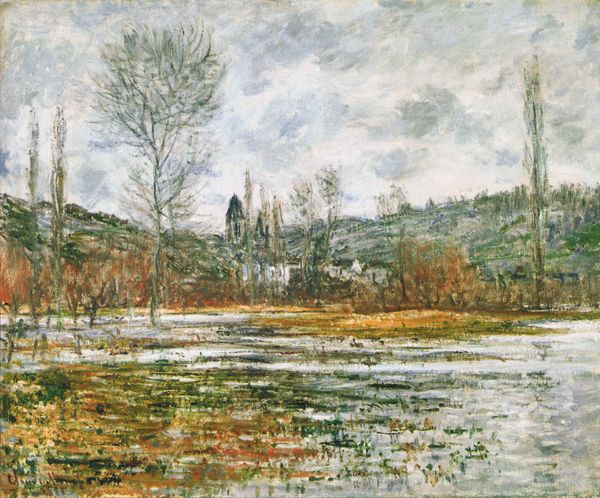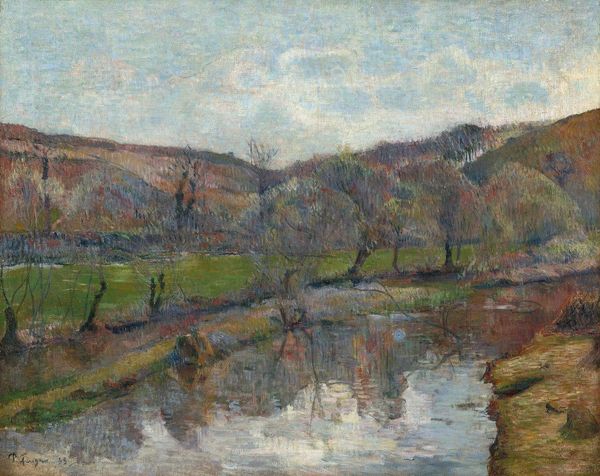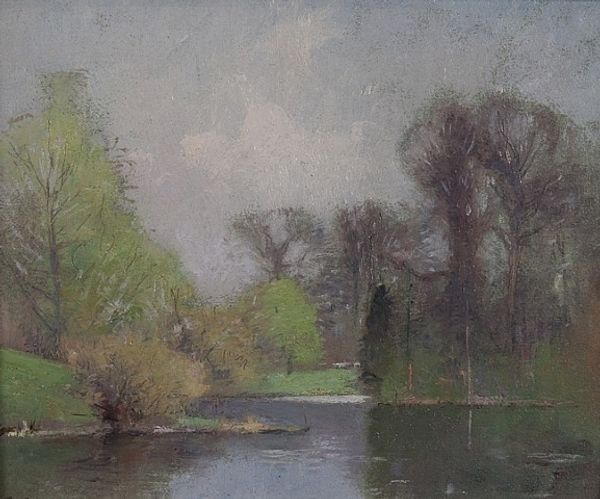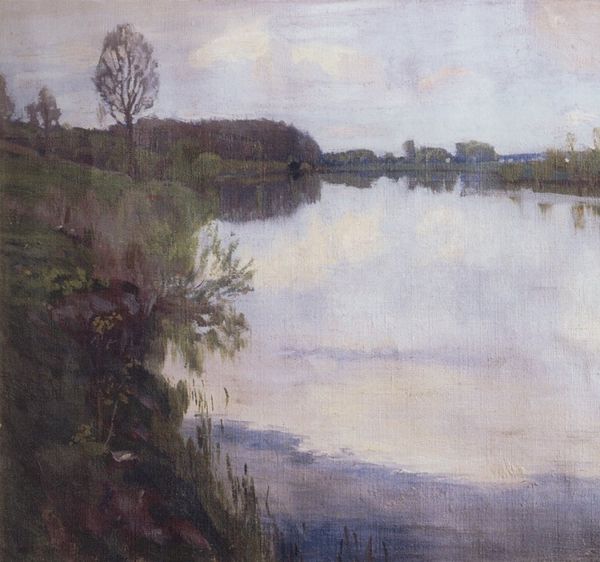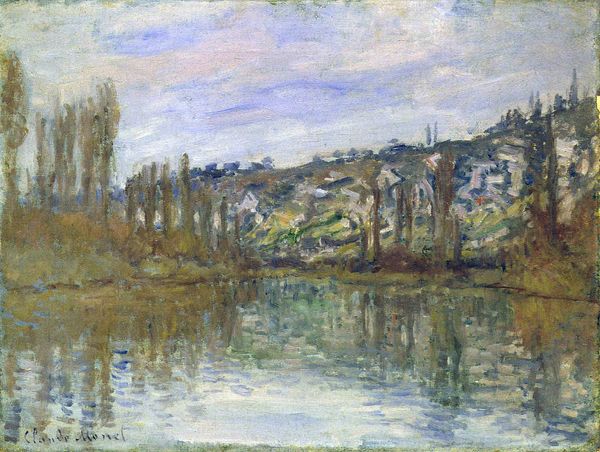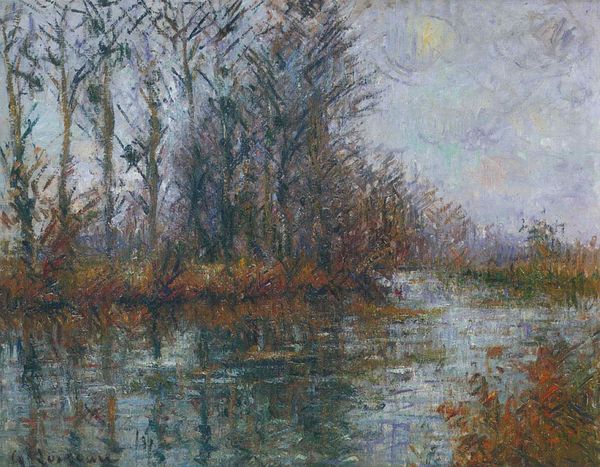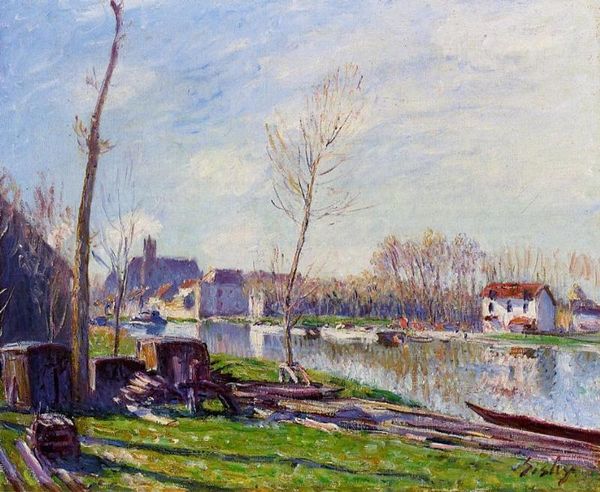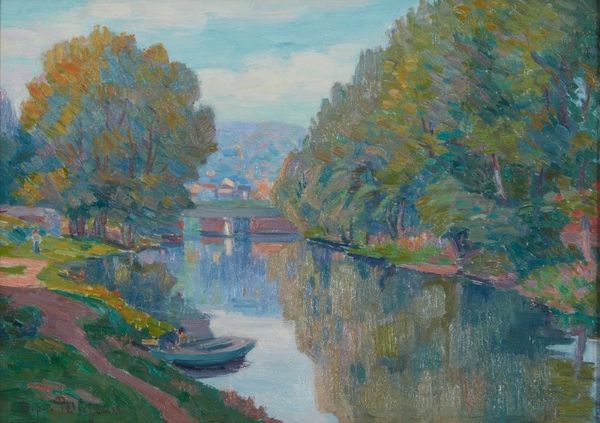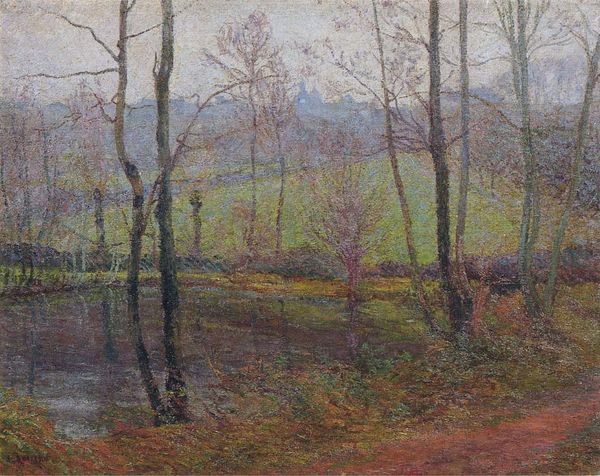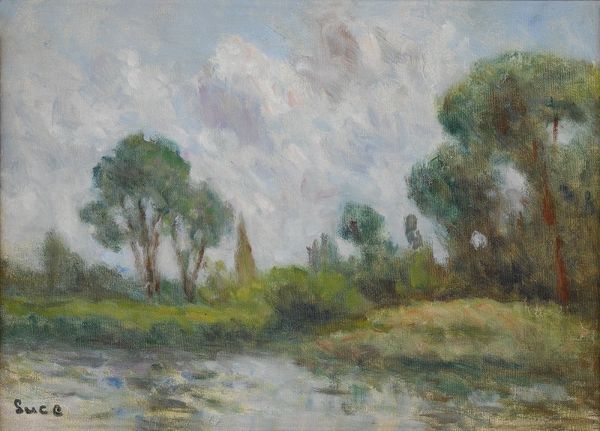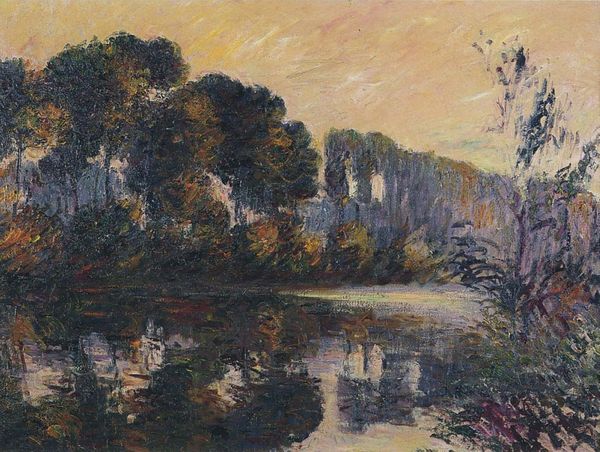
plein-air, oil-paint, impasto
#
impressionism
#
plein-air
#
oil-paint
#
landscape
#
impressionist landscape
#
figuration
#
nature
#
impasto
#
nature
Copyright: Public Domain: Artvee
Curator: Claude Monet's "Printemps à Vétheuil," painted in 1881, offers a compelling snapshot of the French countryside during springtime. Editor: The cool, muted palette immediately gives me a sense of melancholic tranquility, like the stillness just before a spring rain. And the reflections in the water almost perfectly mirror the landscape. Curator: Indeed, the mirrored reflection is a crucial compositional element. It blurs the boundary between the real and the represented, a theme recurrent in late 19th-century Impressionist art, and offers an early example of work completed 'en plein air.' The transient atmospheric conditions Monet captured highlight the burgeoning environmental awareness of the period. Editor: You can certainly see that Monet constructed this scene from layers of colour. Look at the banks and distant hillside - lavender, olive, sienna –it's not a photorealistic study. Curator: This technique underscores Monet’s revolutionary rejection of academic tradition in favour of sensory immediacy and the socio-political shift toward valuing subjective experience in art. Editor: I’m captivated by how the brushstrokes themselves almost become the subject matter; thick impasto in places, creating a texture that reflects the density of the foliage. It’s interesting how Monet uses this interplay to express the very essence of the season. Curator: I think seeing this in the context of the rapid urbanization and industrialisation of France, Monet’s work serves as a cultural preservation project. These works were intentionally accessible, aiming to reach an emerging bourgeoisie through art and depicting a landscape becoming rapidly mythologized. Editor: Considering that, I now see those slightly taller buildings near the village church acting almost like stand-ins for the encroaching influence of technology or commerce. It is an extremely subtle piece! Curator: Precisely. A perfect example of how the personal and political are interwoven within Impressionism. Editor: This really encourages one to pause and simply contemplate the subtle shifts in colour, the fleeting effects of light—an opportunity to immerse oneself in a moment.
Comments
No comments
Be the first to comment and join the conversation on the ultimate creative platform.
